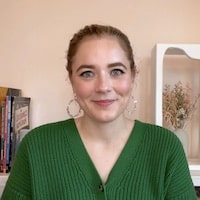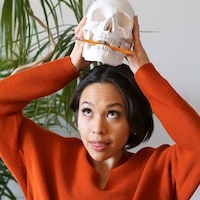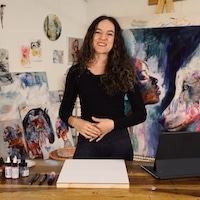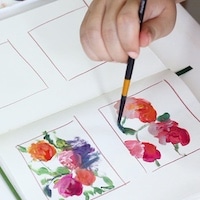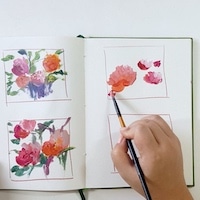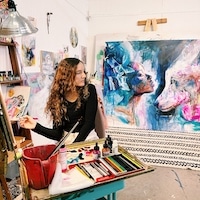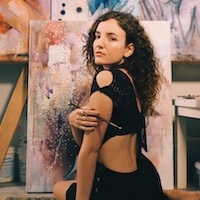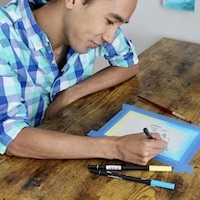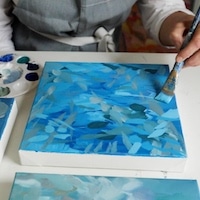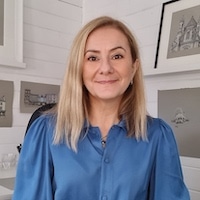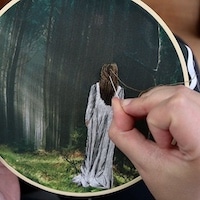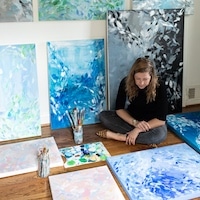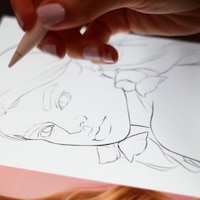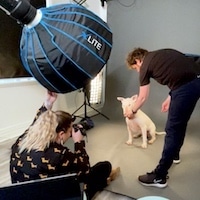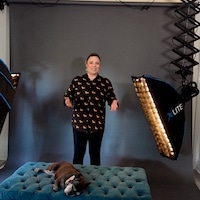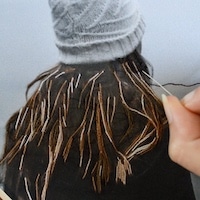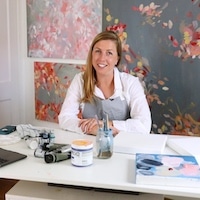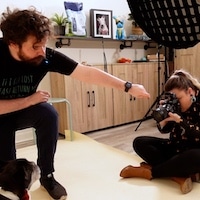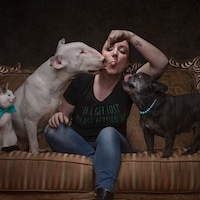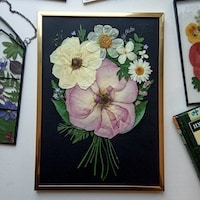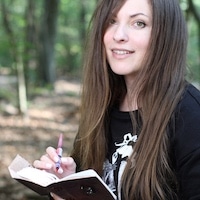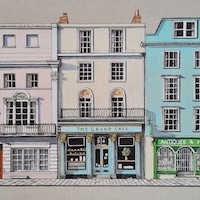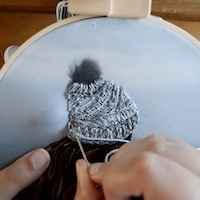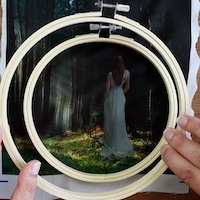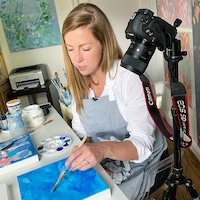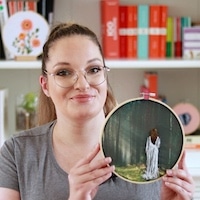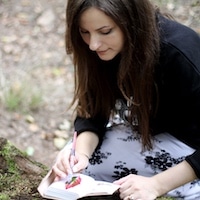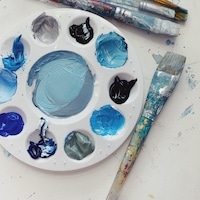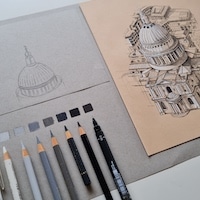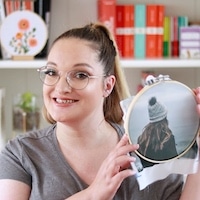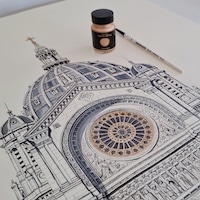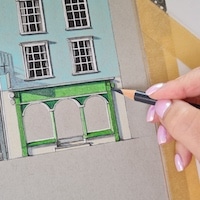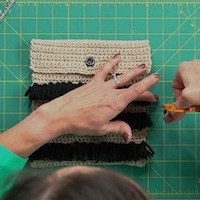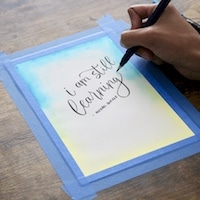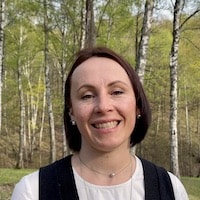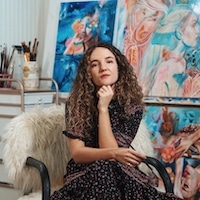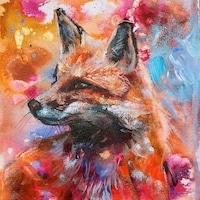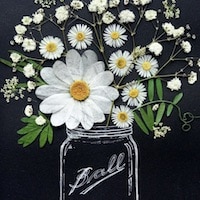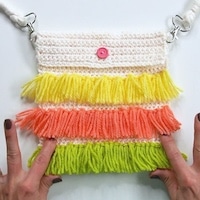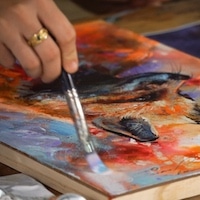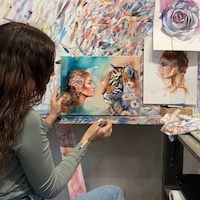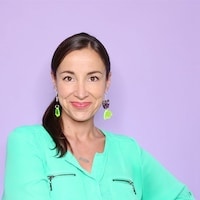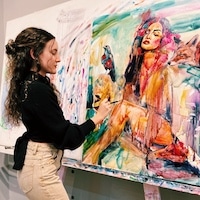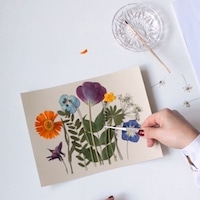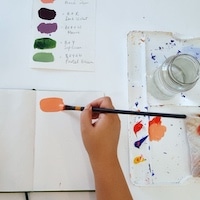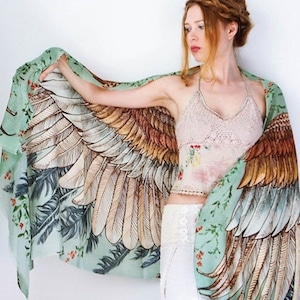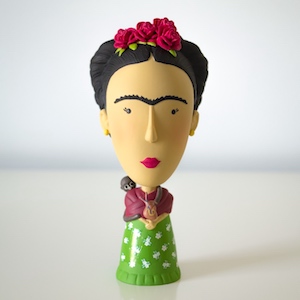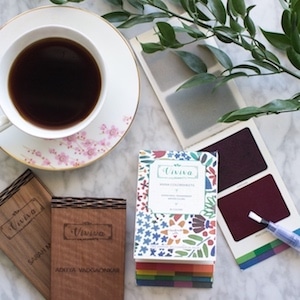Photo: Luke Hayes
For Lee Broom, showcasing his work at the 2025 London Design Festival (LDF) felt like a homecoming. After all, LDF kickstarted his career in 2007 and, in the 18 years since then, the designer has created countless lighting products, sculptures, and accessories. At this year’s edition of LDF, Broom unveiled one of his most ambitious projects to date, in collaboration with Czech glass masters Brokis and eco-design pioneers Materials Assemble.
Nestled outside of London’s Southbank Centre, Beacon gathered hundreds of glass shades, all organized into a circular formation. During the day, the structure’s silhouette was the star of the show, its angularity complementing the Brutalist architecture found throughout the area. Whenever night would fall, however, Beacon would truly live up to its name, casting a warm glow across the surrounding concrete, much like a floating chandelier or a central hearth. Notably, the installation would switch on alongside the chimes of Big Ben across the Thames. That participatory edge only highlighted Beacon’s relationship to its chosen location, from which Broom derived significant inspiration.
“With Beacon, although it is a modern and forward-facing piece, it felt important that it was also grounded in its environment and in the rich history of the Southbank Centre,” Broom said in an interview with LDF.
Indeed, the sculpture incorporated several historical details specific to the site. It recalled George Vulliamy’s Victorian lampposts that were installed along the Thames River in the 1870s, while its rippled texture responded to the Baltic Pine imprints embedded in Hayward Gallery’s concrete walls. Above all, though, it was a reference to the 1951 Festival of Britain, where the Royal Festival Hall was described as a “beacon of change.”
But Beacon was not merely a historical homage. It was also an exercise in sustainability. Each glass shade was forged from upcycled fragments from Brokis, and its structure was also designed with disassembly in mind. Now that LDF has concluded, Beacon can now become “functional art, standalone fixtures for homes, or pendant chandeliers for public spaces,” per the festival.
“I hope people take a piece of Beacon home,” Broom said. “It won’t just be a fleeting installation—it was important that it had longevity and that it could evolve and continue to be a part of the city in a new way.”
Beacon was on view during this year’s London Design Festival, held from September 13 to 21, 2025. To learn more about the designer, visit Lee Broom’s website.
Showcased during the 2025 London Design Festival, Lee Broom’s newest installation offered a beacon of light amid the city’s Brutalist architecture.
Photo: Luke Hayes
Photo: Luke Hayes
Photo: Luke Hayes
Photo: Luke Hayes
Photo: Luke Hayes
Photo: Luke Hayes
Aptly titled Beacon, the installation was composed of hundreds of glass panels, each forged from upcycled glass from Brokis Workshop in the Czech Republic.
Photo: Luke Hayes
Photo: Luke Hayes
Photo: Luke Hayes
Photo: Luke Hayes


